The book isn’t better. With one huge caveat.
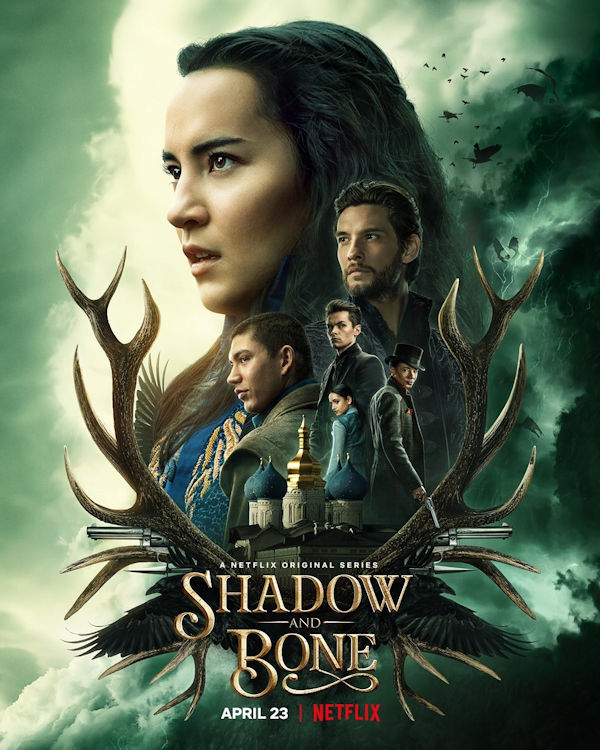 Sucked in by the Grisha with their magical powers and vibrant worldbuilding equal to Game of Thrones, I binged Netflix’s adaptation of Leigh Bardugo’s Shadow and Bone in two days. In the aftermath, I couldn’t help but to pick up the audiobook.
Sucked in by the Grisha with their magical powers and vibrant worldbuilding equal to Game of Thrones, I binged Netflix’s adaptation of Leigh Bardugo’s Shadow and Bone in two days. In the aftermath, I couldn’t help but to pick up the audiobook.
And you know that adage, “The book was better”?
That’s definitely not the case with Shadow and Bone… with a huge caveat, which I will explain later.
In most cases, screen adaptations are limited. A viewer can only extrapolate internal narrative from an actor’s expressions; we can never know a character’s visceral reactions, and textured back stories and rich worldbuilding included in a book are oftentimes left on the editing room floor to keep runtimes within reason.
Of course, there are glaring exceptions. While I wouldn’t consider Fifty Shades of Grey good (and I posit it IS fantasy: a young, hot self-made billionaire who has free time to fly planes and get his kinks is less plausible than orcs), I enjoyed the movie more than the book. After all, being in Ana’s head got tiring, and at times, I wanted to throttle her Inner Goddess.
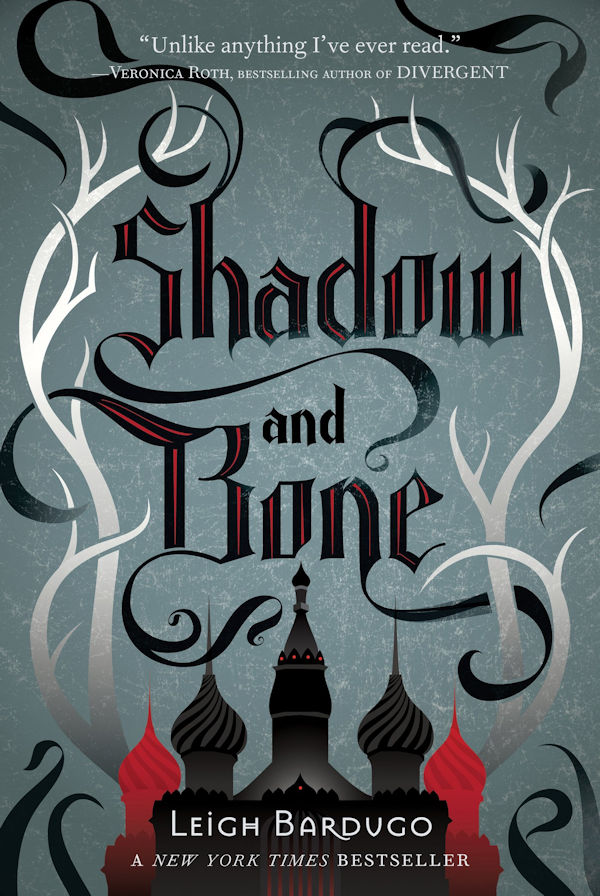 In the same vein, book one of Shadow and Bone suffers from Alina Starkov’s insufferable internal narrative. It is a paint-by-numbers YA fantasy, where she’s not like the other girls, and has a unique ability. Her broody childhood friend-turned-love interest Mal is a jerk to her, but as readers, we can tell his attitude is to hide his romantic affection for her. Throw in the Darkling to form the love triangle, and it’s just like Twilight, City of Bones, The Hunger Games, Red Queen, and a dozen other YA fantasies I’ve read and since forgotten.
In the same vein, book one of Shadow and Bone suffers from Alina Starkov’s insufferable internal narrative. It is a paint-by-numbers YA fantasy, where she’s not like the other girls, and has a unique ability. Her broody childhood friend-turned-love interest Mal is a jerk to her, but as readers, we can tell his attitude is to hide his romantic affection for her. Throw in the Darkling to form the love triangle, and it’s just like Twilight, City of Bones, The Hunger Games, Red Queen, and a dozen other YA fantasies I’ve read and since forgotten.
The Netflix series improves on the book through this addition by subtraction: without Alina’s internal narrative, we experience her through the brilliant acting of the talented Jessie Mei Li, and Alina becomes a likable character. Part of this comes from the producers making both Alina and Mal mixed-race. Though both are full Ravkan (second world Russian) in the book, she is half-Shu (East Asian) in the series. He is referred to as a mutt, though it is unclear whether he is also half-Shu or half-Suli (East Indian, like his actor Archie Renaux). With their adopted country at war with Shu, Alina is often the brunt of insults; I found it salient given the rise of anti-Asian violence in the United States, and also helps make her a sympathetic character.
True to YA fantasy tropes, the love triangle remains in the form of General Kirigan, a powerful Grisha who can control darkness. He believes Alina has the power to banish The Fold, a shadowy rift that split Ravka into two. Like Four in Divergent, General Kirigan is the older guy who sees Alina for who she is, and online fan groups are torn between factions shipping Darkalina and Malina.
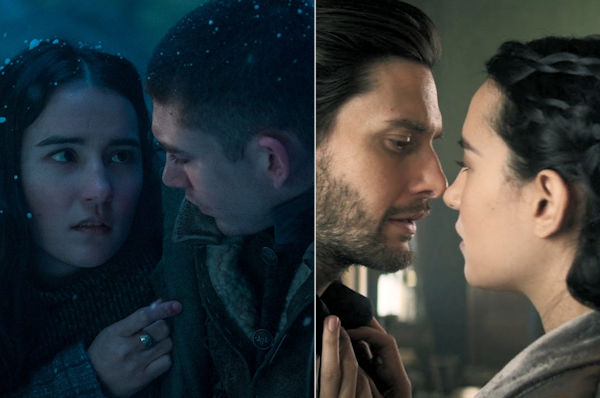
Although the TV series tracks almost exactly to the book, it also benefits from not being anchored in a single point of view. Several of Mal’s experiences, which are referenced through dialog in book one, are shown on screen, as are flashbacks with General Kirigan. It also shows a broader view of the Grishaverse, from the political situation to the complexity of the magic system: the three core spheres impact the body (Corporalki, like clerics), the elements (etherealki, like the Avatar world’s benders), and materials (Materialki, like alchemists and artificers). Depending on the country and time in history, they are admired, feared, or despised.
The greatest addition to the series, however, is the characters from Bardugo’s Grishaverse heist story, Six of Crows. Members of a street gang, they are led by Kaz, a con artist and information broker. There’s an unspoken affection between him and Inej, a Suli (similar to real-world Roma) acrobat who he freed from servitude in a brothel. They’re joined by Jesper, a garrulous Zemeni (African) who has a sharp aim with guns and an even sharper tongue, in their attempt to kidnap Alina.
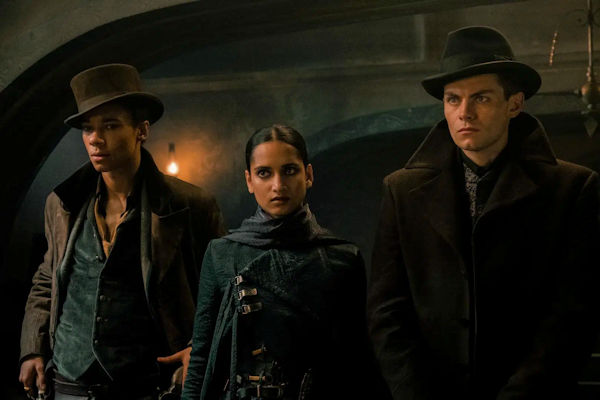
A third arc follows Nina, a Ravkan Grisha working for General Kirigan, who is captured by the Fjerden (Germanic/Scandinavian) witch hunter Mattias. She’s been raised to fear these Druskille for their persecution of Grisha, while he’s been indoctrinated to believe Grisha are evil. Closely following their back story from Six of Crows, the ship he’s transporting her on crashes, and they form an unlikely alliance to survive the freezing weather.
In both of these secondary arcs, the characters feel so textured, their interactions so alive. Yet as incredible as these stories are, they are a cheap imitation of Six of Crows, which I picked up right after finishing book one of The Shadow and Bone Trilogy.
It might be the best fantasy book I’ve ever read.
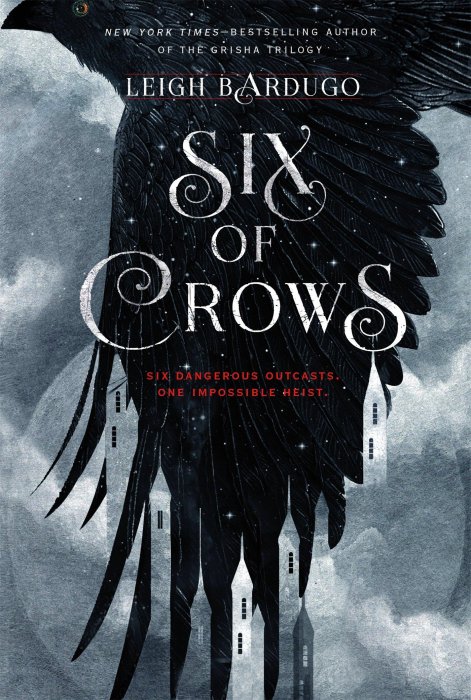 Bardugo’s characterizations are scintillating in the way the characters pop off the page. The narrative weaves together each person’s backstory, inner conflicts, motivations, and internals, all in distinctive voices. The way Inej names her knives and recites them before a job; or Kaz’s meticulous preparations and leveraging; or Jesper’s cocky attitude hiding his uncertainties; Mattias’ conflicted feelings for Nina—all paint damaged, endearing characters, whose relationships and interactions propel the story to atmospheric levels of enjoyment.
Bardugo’s characterizations are scintillating in the way the characters pop off the page. The narrative weaves together each person’s backstory, inner conflicts, motivations, and internals, all in distinctive voices. The way Inej names her knives and recites them before a job; or Kaz’s meticulous preparations and leveraging; or Jesper’s cocky attitude hiding his uncertainties; Mattias’ conflicted feelings for Nina—all paint damaged, endearing characters, whose relationships and interactions propel the story to atmospheric levels of enjoyment.
While the storyline of Six of Crows isn’t included in season one of Shadow and Bone, it is an exciting ride with brilliant twists and turns (Note: A Variety magazine interview with screenwriter Eric Heisserer, who adapted Ted Chiang’s Arrival and Josh Malerman’s Bird Box, reveals the job to kidnap a scientist from Six of Crows became kidnapping Alina in the Netflix series. Well worth the read.)
My bottom line: the Netflix series is well worth watching, an 8.5/10 stars. If you enjoyed it, you can skip reading book one (5/10), since the storyline is almost exactly the same; but walk, no RUN to the book store and pick up Six of Crows for one heck of a ride (10/10)!
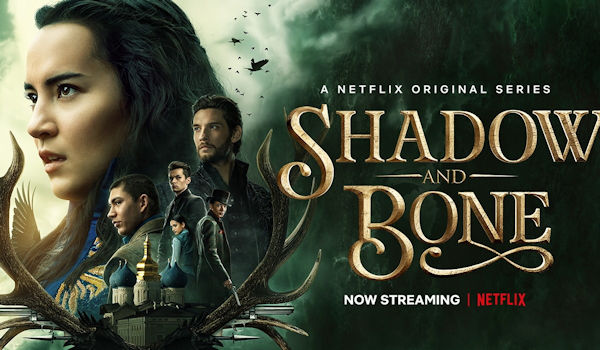
EDIT: I’ve been on a Grishaverse binge. I loved Crooked Kingdom (10/10), the sequel to Six of Crows, even better than the first, though I was crushed by the ending. Some of the events in the story made me want to go back and read the rest of Shadow and Bone; and Grishaverse fans have said the original series sets up King of Scars, which is the start of a new duology that chronologically follows Crooked Kingdom. I just finished book two; Siege and Storm is more enjoyable than book one (7/10), so I’m glad I decided to soldier through.

